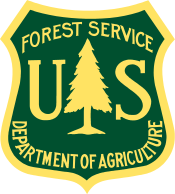| Abstract | The long-term eectiveness of dry-forest fuels treatments (restoration thinning and
prescribed burning) depends, in part, on the pace at which trees regenerate and recruit into the
overstory. Knowledge of the factors that shape post-treatment regeneration and growth is limited
by the short timeframes and simple disturbance histories of past research. Here, we present results
of a 15-year fuels-reduction experiment in central Washington, including responses to planned
and unplanned disturbances.We explore the changing patterns of Douglas-fir regeneration in
72 permanent plots (0.1 ha) varying in overstory abundance (a function of density and basal
area) and disturbance history—the latter including thinning, prescribed burning, and/or wildfire.
Plots were measured before treatment (2000/2001), soon afterwards (2004/2005), and more than
a decade later (2015). Thinning combined with burning enhanced sapling recruitment (ingrowth)
into the overstory, although rates of ingrowth were consistently low and greatly exceeded by
mortality. Relationships between seedling frequency (proportion of quadrats within a plot) and
overstory abundance shifted from weakly negative before treatment to positive after thinning,
to neutral in the longer term. However, these relationships were overshadowed by more recent,
higher-severity prescribed fire and wildfire that stimulated seedling establishment while killing
advanced regeneration and overstory trees. Our results highlight the dependence of regeneration
responses on the history of, and time since, fuels treatment and subsequent disturbance.
Managers must be aware of this spatial and temporal complexity and plan for future disturbances
that are inevitable but unpredictable in timing and severity.
|




